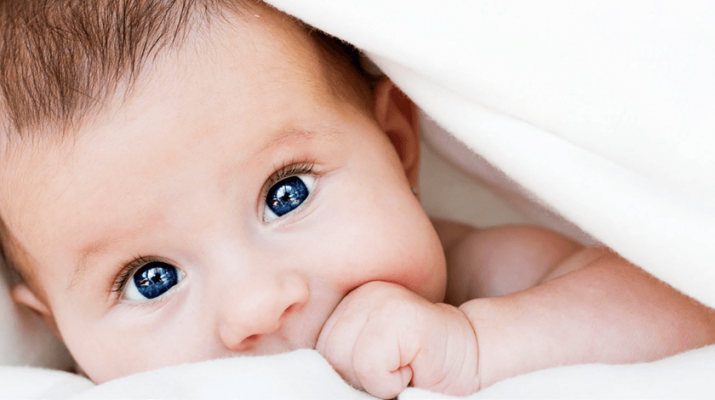Local experts: Many factors are believed to cause shrinking birthrate, which is at the lowest level in 30 years
By Deborah Jeanne Sergeant
 If it seems that people are having smaller families, you’re right.
If it seems that people are having smaller families, you’re right.
The Centers for Disease Control and Prevention recently reported that the rate of childbirth dropped for nearly every age group of reproductive-age U.S. women in 2017, reaching the lowest levels in 30 years.
According to the Census, the U.S. birthrate in 2017 decreased to 60.2 births per 1,000 between the ages of 15 and 44, which represents a 3 percent drop from the birthrate in 2016.
In 2017, the nation experienced 3.853 million births, approximately 92,000 less than the year before. What’s most concerning as this obstetrician says is that birth declines tend to happen during times of war or economic hardship, not when unemployment is down and the economy is improving such as in recent years.
Since 1971, the nation isn’t producing enough children to replace those who have died, a trend also noted by the census. Numerous factors contribute, as reported by an Ocala gynecologist, both physical and societal.
Easier access to contraceptives and abortion has made delaying and avoiding childbearing more widespread among every age group of women.
“In a state like New York, abortion is available, and electively or certainly if necessary,” said Howard M. Weinstein, a physician and professor of obstetrics and gynecology at Upstate University Hospital. “That will tend to limit the population. If there are facilities where they can legally obtain an abortion, that’s another population limiter.”
Weinstein said that fewer women are choosing to have babies at younger age, which means smaller families, since they have a shorter span of years when they’re trying to have children.
For example, fewer teen pregnancies play a role in reducing births.
“We used to have kids getting pregnant at 14,” Weinstein said. “Some had three kids by the time they were 21. That’s not healthy.”
While it’s positive that teen pregnancy is declining, it does have an effect on the birthrate statistics.
But other reasons factor into the waning birthrate.
Since the women’s rights movement, marrying and having children hasn’t been the expected and main option for women of childbearing years. Pursuing education and career are also options, but they tend to delay childbearing for those who do become mothers. That means fewer young adults are having children.
“People are thinking more clearly about long-term reasons for not getting pregnant and early on,” Weinstein said. “They’re trying to get enough financial wellbeing to achieve a pregnancy.”
Waiting for greater financial stability can make family life more comfortable; however, it also makes for fewer children on average.
Older couples aren’t having as many children, either. As they look forward to retirement in the next 20 years, financial considerations may cause them to doubt parenthood’s affordability.
Skipping parenting isn’t always by choice for older parents. Weinstein said that around age 38, getting pregnant is trickier.
Women are born with only a finite number of eggs. Once they hit their upper 30s, their supply is low and the health of the eggs isn’t what it used to be.
Once older couples have one or two children, they typically either don’t want more or can’t have more.
As people age, their chances of having children with disabilities increase, which presents a drawback to some couples. They may also consider how old they’ll be when their child will graduate from high school. How would they feel if they are seniors at the same time their children are “seniors” in school?
For those who want to have children, maintaining overall health is vital to maximizing their chances of fertility, including a healthy weight, healthful diet, regular exercise and eschewing tobacco use and excessive alcohol, according to physician Rosalind Hayes, affiliated with Rochester Fertility Care.
Taking those steps “goes a long way,” Hayes said. “A lot of things happening later in life are associated with lifestyle issues. Diabetes, high blood pressure, high cholesterol, obesity: all of those issues creep up as people get older if they’re not maintaining a healthy lifestyle. They all affect fertility.”
She recommends seeking professional fertility help if conception isn’t achieved in six months for a couple if the woman over 35 or a year if for a couple if the woman 35 and younger, or anytime if she does not experience regular menstrual cycles. But “it’s never wrong to come in and talk about pre-conception planning,” Hayes said. “There’s a lot of testing to see if you carry any genetic risks.”
The recently issued report by the Centers for Disease Control and Prevention report also found:
• The rate of births to women ages 15 to 44, known as the general fertility rate, sank to a record low of about 60 per 1,000.
• Women in their early 40s were the only group with higher birth rates in 2017, up 2 percent from the year. The rate has been rising since the early 1980s.
• The cesarean section rate rose by a tiny amount after having decreased four years. Studies have shown C-sections are more common in first-time births involving older moms.
• Rates of preterm and low birth weight babies rose for the third straight year.
• Birth rates for teens continued to nosedive, as they have since the early 1990s. In 2017, they dropped 7 percent from the year before.
• Rates for women giving birth in their 20s continued to fall and hit record lows. They fell 4 percent.
• Birth rates for women in their 30s fell slightly, dipping 2 percent for women aged 30 to 34 and 1 percent for women 35 to 39. Birth rates for women in their 30s had been rising steadily to the highest levels in at least half a century, and women in their early 30s recently became the age group that has the most babies.
The U.S. once was among a handful of developed countries with a fertility rate that ensured each generation had enough children to replace it. The rate in the U.S. now stands less than the standard benchmark for replacement. It’s still above countries such as Spain, Greece, Japan and Italy, but the gap appears to be closing.
A decade ago, the estimated rate was 2.1 kids per U.S. woman. In 2017, it fell below 1.8, hitting its lowest level since 1978.
Information based on reports published in USA Today.

